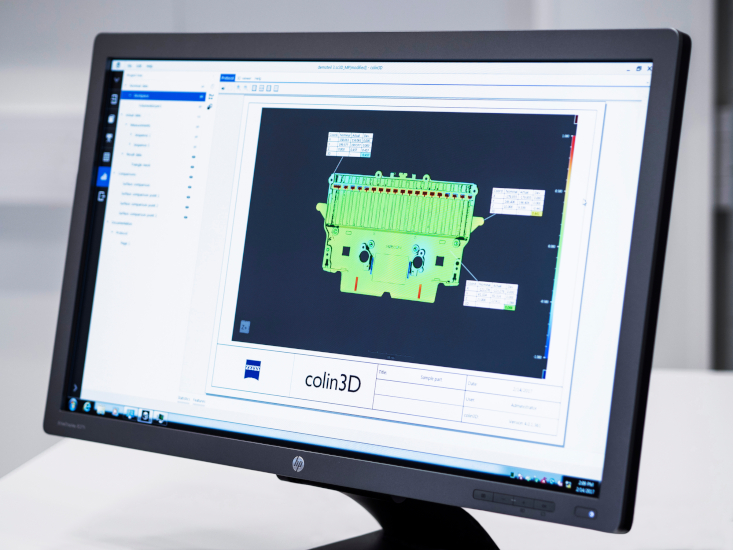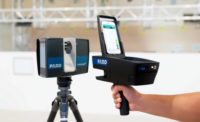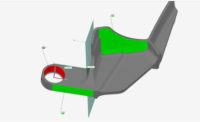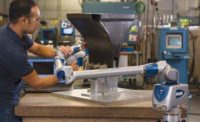If you’re interested in 3D scanning, you’re in good company. From automotive to medical, more and more companies are adopting 3D scanning technology.
According to a Markets and Markets research report on the 3D scanner market size, the market is expected to grow to $5.90 billion by 2023. According to the report, “The market growth can be attributed to the increasing need to capture large volumes of 3D data for modelling and analysis, rising focus on quality control, and growing awareness about advanced medical treatments.”
Selecting the right system comes down to asking the right questions. One question to consider is: do you plan to automate this at any point in the future?
Ian Scribner, portable 3D scanning product sales manager, industrial metrology business group, Carl Zeiss Industrial Metrology LLC, offers this advice: If your process is manual today but in two to five years you may want to automate it, “Make sure you’re selecting the system that will allow you to automate. It’s being able to be flexible enough to crawl, walk, and run with automation.”
White light and blue light technology is a good option if you’re considering future automation. It’s a graduation from laser based technology, with better accuracy and resolution and allows for full automation.
For those who already are using 3D scanners but would like to move to the next step, Scribner says, “It’s best to figure out what the limitations of the current technology are from their perspective.” This allows a sales team to put the right system in front of these customers. For example, “If a customer lays out that throughput is where he wants to go, I would recommend a certain sensor, but if they say accuracy, I may lean to a different sensor.”
When selecting a system, Scribner has some additional tips for success. “The biggest advice is not being afraid to request a repeatability study or accuracy study.” He says one of the biggest mistakes is to buy a product just based on a spec sheet. Suddenly you may be using a system that doesn’t match the accuracy and repeatability you were looking for. In addition, Scribner says, “Pay close attention to the software that you select with your first system. It doesn’t matter how great my scanner is if the inspection software has no value to you. Pay almost more attention to software.”
“Selecting the right software can really make or break the investment you put into the hardware,” Scribner notes. Though the cost of the software may only be 20% of the cost of implementing the scanner, it have an outsize impact on the success of the application.
As you’re looking to see if 3D scanning can help your application, product managers are available to help. Whichever company you’re working with should ultimately be able to answer your questions. But here are some general factors to consider before adopting 3D scanning technology, including size, accuracy, and repeatability.
First off, Scribner says, is part size: “And feature size on those parts. Depending on feature size, what sort of resolution on the scanner? Then accuracy, now you need to look at what sort of uncertainty. Lastly, one of the things is repeatability. It’s one thing to be accurate but we also need to be able to repeat the accuracy. Funnel down to the size, feature size, accuracy, resolution, and repeatability.”
Another factor to consider is the 10X rule in metrology, Scribner notes. Then consider the application. “Are we going to be using the 3D scanner for inspection? Or reverse engineering, or a combination of both?”

After narrowing down the application, it’s time to look at hardware and the accompanying software.
The applications for 3D scanning run the gamut of manufacturing, Scribner says, including sheet metal, castings, automotive and medical. It may seem that there’s nowhere that 3D scanning won’t go. But there are a few where it’s just not the right tool. For example, programmable circuit boards (PCBs) often are not the best fit for this technology based on the speed requirements and the fact that having any spray or paint on the board isn’t possible. Though the decision is always application specific, medical applications also may not be fit if a paint is required. For example, the medical device industry would shy away from putting paint or spray on a hip bone that’s about to be inserted into someone’s body. In other applications, throughput can also be a determining factor.
As adoption of the technology has matured, customers often ask for the same things: faster and more accurate products. Though the technology does seem to be close to the boundary of what’s possible, the technology is light years ahead of where it was seven or eight years ago, Scribner says. With the competition in this space, it yields more innovative ideas and also lower prices.
For those who may have thought that 3D scanning wasn’t cost-effective for their application, know that the landscape has changed. These aren’t the same 3D scanners that were available just a few years ago. As Scribner says, “It’s not a bad time to take another look at it.”




